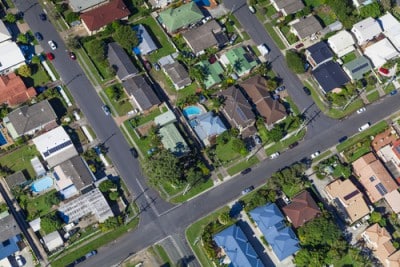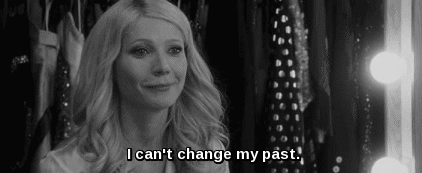I Feel Guilty That My Daughter Won The Charter School Lottery
 The day after the charter school lottery, I sat waiting for my phone to ring. I had been too nervous about the results to attend the lottery the previous evening, so now I was waiting for the school to call and tell me whether my daughter had been chosen to attend the school.
The day after the charter school lottery, I sat waiting for my phone to ring. I had been too nervous about the results to attend the lottery the previous evening, so now I was waiting for the school to call and tell me whether my daughter had been chosen to attend the school.
I’d been hearing about the charter school since before I was even pregnant. From the day we moved to the neighborhood, friends told us we should try to get in. In a district that had long been failing, this school was a beacon, an inner-city star, the kind of school people write books about. Innovative and progressive, the school avoided grades for an emphasis on gardening, yet achieved higher test scores than any neighboring school. Everyone I knew who had a child there loved it.
There was just one problem: to get in, you had to win the school enrollment lottery. And according to everyone I talked to, it was really, really hard to win.
When my daughter was a toddler, I’d join in playground conversations about numbers and percentages. People said that hundreds of families applied for 20 or 30 spots. We joked about trying to get jobs as teachers or join the board, both of which sounded easier than getting lucky in the lottery.
It wasn’t until we wanted to buy a house in the neighborhood that I realized winning might be easier than I thought. In a way, the lottery was biased — in our favor.
The school is open to anyone who lives within the city limits, but preference is given to different zones. If you live in Zone One, you’re in the first round of the lottery. If there are still spots left after the first lottery, then a second drawing is held, from entrants who live in Zone Two. Any remaining spots are filled from Zone Three, which includes the rest of the city. But since the school is so popular, the spots are always filled after the first round of the lottery, and even in Zone One, many families don’t get in.
So when we decided to buy a house when our daughter was three, getting into Zone One was one of our top priorities. At the time, we were living in a lower-income but gentrifying neighborhood about a mile from the school. Our rent was cheap, and the neighborhood was poised to grow. We considered buying a house there, and we nearly put an offer on a very affordable house that was only a few blocks from the charter school. But even though the house was so close to the school, it wasn’t in Zone One — or even in Zone Two. It was in Zone Three, which meant if we lived there, our kids would have no chance at getting in. So we passed on that house and focused our search inside Zone One.
We quickly discovered that house prices dropped exactly where the charter school zone ended. That made sense. People were willing to pay more for even the chance that their kids could get into the school. But as I studied the map and compared it to houses for sale, I couldn’t help but wonder why the zones were drawn the way they were. One house just blocks from the school was in Zone Three; another nearly two miles away was in Zone One.
And as I visited the different neighborhoods, I noticed another split that also followed the zoning lines: a racial one.
For me, as a newcomer to the neighborhood, it’s hard to separate cause from effect. The school was founded 12 years ago, the first public elementary school in the neighborhood. The area has changed since then. Maybe this gap was just the inevitable result of success; the zone lines were based on neighborhood involvement in the creation of the school, and the price of housing inside the first zone rose along with the school’s popularity and success. As prices rose, those houses — and the chance to get into the school — became less accessible to lower-income families. But whatever the reason, the facts are these: at the local public school, 78 percent of the students are black, 12 percent are white, and 72 percent receive free or reduced lunch. At the charter school, 18 percent are black and 68 percent white, with 13 percent eligible for free or reduced lunch. These two schools are supposed to draw from the same neighborhood. But they’re in different worlds.
In the end, we — unlike most families in our city — were able to afford a house in Zone One. And it paid off. The day after the lottery, when I hadn’t heard from the school, I finally decided to call a friend who had also tried to get her son into the school.
“Your daughter got in,” she told me, almost as soon as she picked up the phone, and I was flooded with relief. It was quickly replaced by guilt as she added, “My son is number 74 on the waiting list.”
But I don’t feel too bad for my friend. Like most residents of Zone One, she has other options. Her son has started kindergarten at a private school, and she’s hoping that in a year or two, a spot will open for him at the charter school. In her mind — as, I’ll admit, in mine too — the local public school isn’t really a possibility. I’d like to believe my only reasons for that have to do with educational philosophy, test scores and class size. But it’s hard to separate out these factors, especially ones like test scores and income levels that are so closely tied together.
I’m happy my daughter got into the charter school. I’m happy she’ll be learning about composting and gardening instead of doing math worksheets, that she’s in a school that still has a budget for music and art. Most of all, I’m happy that she loves kindergarten. I’m certainly not willing to sacrifice her academic potential or her enjoyment of school for a political agenda.
But I also feel guilty. Guilty that our family has options when so many others don’t. Guilty that I’m participating in a type of segregation, however accidental it may be. Because school teaches more than academics; it teaches about life. And the last lesson I want my daughter to learn is that the all-too-prevalent racial and economic divides in our society are okay. But I’m afraid that by accepting them, that’s exactly what I’m teaching.
(photo: zstock / Shutterstock)





